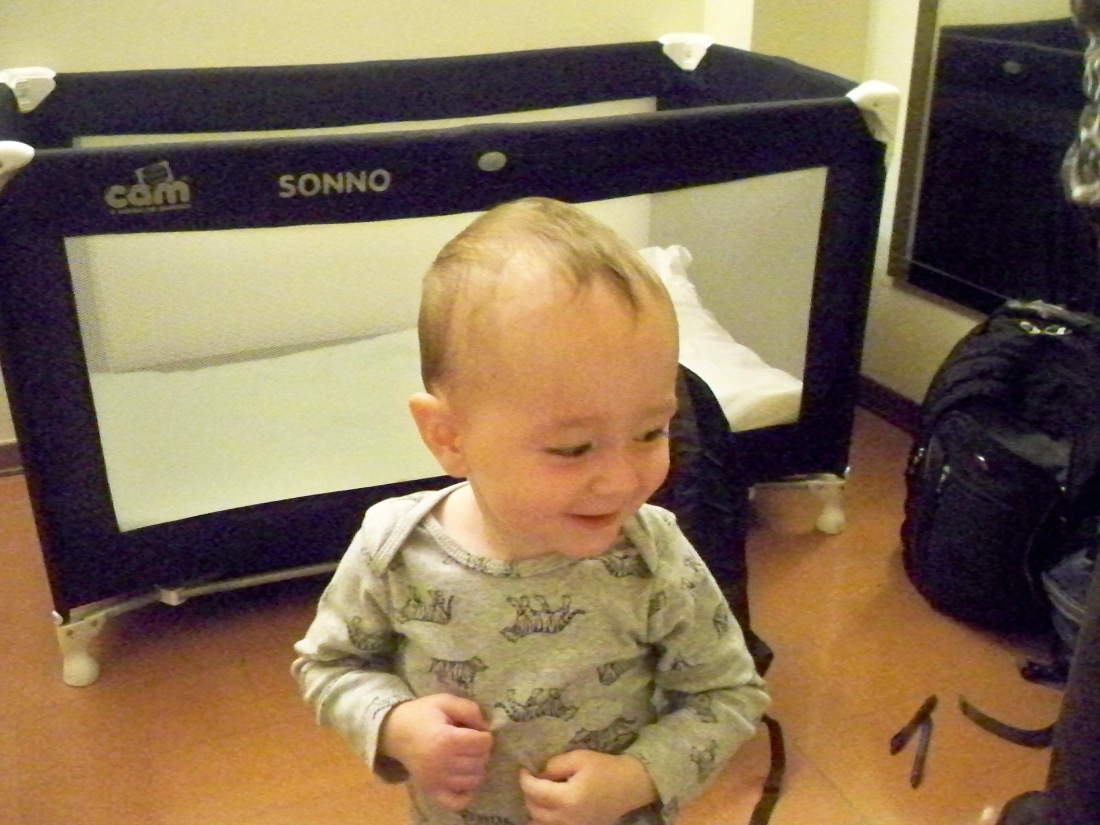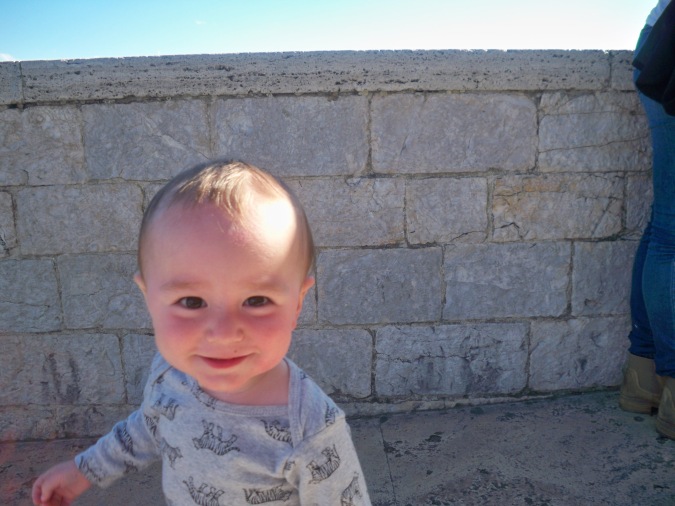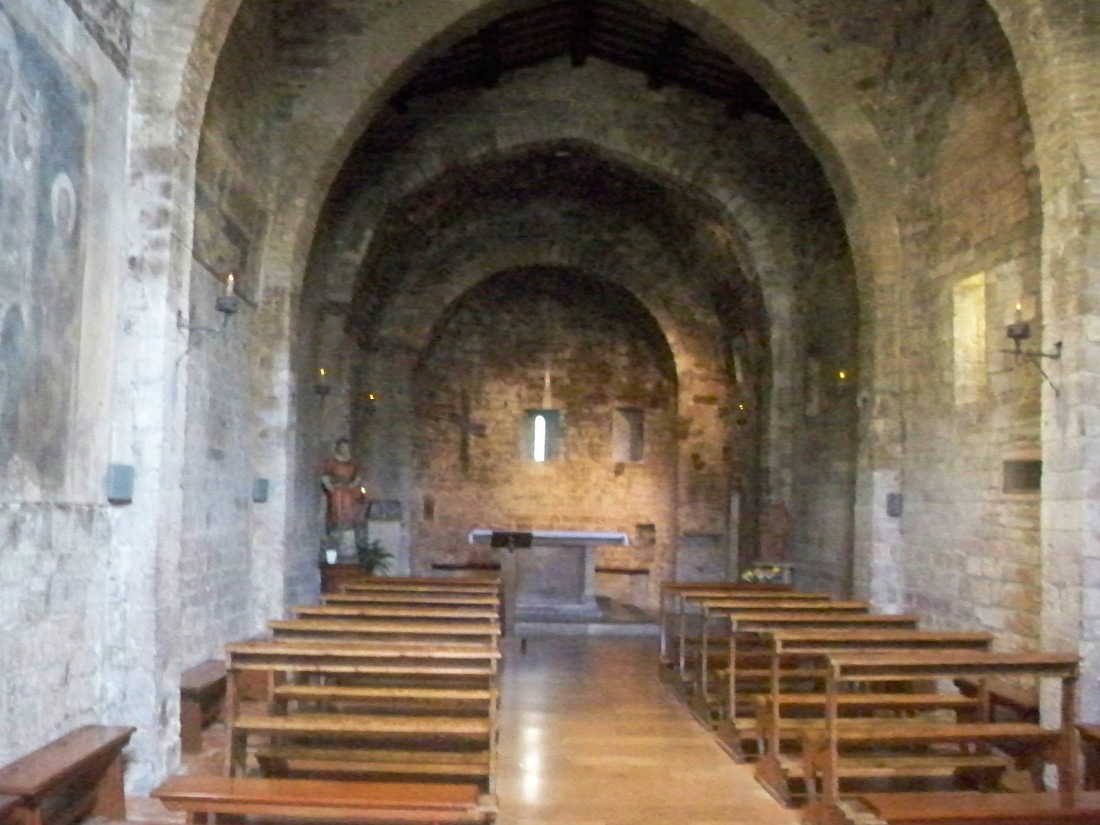Two Saints
Clearly, the main claim to fame and draw of Assisi is St. Francis and, to a lesser extent, Saint Clare. One of the most well-known and beloved saints of all time; his example was the reason for the choice of the name Francis by our current pope. Born about 1181 to a silk merchant and named Giovanni but nicknamed Francesco (the Frenchman) by his father, he grew up in a wealthy family. As a young man, he embraced a dissolute and carefree lifestye of near-constant partying. Eventually, in his 20s, he heard God’s call and renounced his former ways for a life of poverty and preaching a call to return to God. He was joined by many followers who became the Franciscan order. He is among the saints to bear the stigmata (the wounds of Christ.) He died in 1226, was immediately acclaimed as a saint, and canonized in 1228.
Saint Clare was born in 1194 to a noble family in Assisi. She was pious and devout from an early age. When she was 18, she left home to follow Francis. Together with other women who would become the first Poor Clare nuns, she devoted herself to a life of prayer, meditation, and simple manual labor. A particularly dramatic story credits her with averting disaster in Assisi. It tells of her holding up the Eucharist in the face of an invading force and praying for the safety of her sisters and the town and the enemy retreating and leaving Assisi undisturbed. She died in 1253 and, like Francis, was canonized just two years later in 1255.
An Unfortunate Setback
In the wee hours of the morning, I awoke to a gagging, coughing baby. For the next several hours, we tried to garner brief spurts of sleep between rushed trips to the bathroom as Michael fought through a stomach bug of sorts. Miserable, he just wanted to sleep but was so sick all morning. As a result, we pushed our checkout to the latest time allowable. After eating breakfast in the room, we gathered our things and headed outside to catch the bus.
Transit to Assisi
Praying that the worst was over, I held baby Michael close to my chest as we boarded the #64 bus to Termini station. After what seemed like innumerable stops, the giant statue of Pope St. John Paul II appeared and beyond it, the bustling transportation hub that is Rome’s Termini station. We walked inside and purchased tickets at the automated kiosk and made our way to platform 2est at the farthest end of the station to catch the train to Foligno where we would switch trains to get to Assisi. We validated our tickets in the machine and then boarded. Finding the train relatively unoccupied, we were able to sit in an empty carriage and have plenty of room to spread out. When the conductor stopped by, he informed us that this train would stop in Foligno and then go on to Assisi so there was no need for a change. Relieved by this development, our anxiety lifted somewhat and we settled in for the train ride. Michael slept for nearly the entire trip and I napped off and on as well. He was tired and exhausted but otherwise happy and healthy.

Arriving at the Assisi train station, we made our way to the newspaper shop to purchase bus tickets for the trip into the town itself. Hopping on the bus, we rode up to Piazza Matteotti and disembarked. Luggage in tow, we made our way through the city gate and looked for our hotel. Unaware that it was up a flight of stairs from ground level, we walked right past it the first time. The shopkeeper from the store below took us up to the hotel, verified our passports, checked us in, and showed us to our room. The room itself was small and basic but clean. The largest issue was the wet bath. Without any enclosure for the shower, the entire bathroom served as the shower when it was in use. There was even a little shield to keep the toilet paper from getting soaked. Despite its miniature size, it still housed a bidet so it was quite a crowded little bathroom.

Stopping at the nearby Pizza da Andrea, we grabbed a quick-lunch before setting off on our pilgrimage/sightseeing in this beautiful hill town. Jason had the traditional torta al testo which is a Umbrian flatbread sandwich as well as a slice of salami pizza. I had a prosciutto and cheese panino.
Saint Francis
Making our way downhill through peaceful Assisi, our first stop was the magnificent Basilica di San Francesco. Under magnificent blue skies, it was little wonder that this holy man developed such a devotion to nature. This humble man who lived at the turn of the 13th century has had such a tremendous impact on the world. His simplicity and devotion to living out God’s will radically cannot help but impact anyone who hears his story. This was particularly evident as we joined so many pilgrims in the town he called home.

Due to the recent terrorism in Europe, we had to go through security with armed guards before entering the basilica itself. It’s really two churches in one with an upper basilica built over a lower one. Since photos aren’t allowed inside, here’s a link to the official photo gallery. Starting with the Romanesque lower basilica which was by far our favorite, we marveled at the curved arches in the low light and quiet`. Frescos covered nearly every wall and made way to intricate designs, culminating in a deep and rich blue ceiling in the central nave with small chapels off to the sides and the main altar up front. We wondered at the little museum/reliquary that housed some of his few possessions. His patched and re-patched robe was a particularly striking reminder of his intense commitment to poverty. Descending to the crypt, we prayed at the tomb of St. Francis. Venturing upstairs to the upper Gothic church, we were immersed in a sea of frescos, bathed in light from the stained glass windows. Along both sides of the church, the story of Francis’ life unfolds in frescos by Giotto.
A Walking Tour of Assisi
Climbing back uphill, we made our way through the town, under medieval arches, past souvenir shops, stopping along the way at points of interest and simply to take in the gorgeous landscape. In stark contrast to the hustle and bustle of Rome, there was a quiet and contemplative peacefulness throughout Assisi. Additionally, the weather was a bit cooler than our days in Rome which made it immensely pleasant.
Our first stop was into the little church of San Stefano. Dedicated to the first martyr, its simple, quiet tranquility perfectly captured the aura of Assisi. The oldest church in Assisi, legends say that its bells tolled mysteriously the day that Francis died.

Our next stop was the Temple of Minerva which now houses a Baroque church. Over and again throughout our travels, it was striking just how ancient things are comparatively. This temple was constructed in the 1st century and still stands today, even though much inside was added in the 17th century.
The Basilica of Santa Chiara was our next church to visit. Dedicated to St. Clare, a contemporary of St. Francis who was inspired by his message and example to follow a life of poverty. The highlight of the Gothic church is the crucifix of San Damiano, the one that spoke to Francis, saying “Go and rebuild my Church which you can see is falling into ruin.” and set him off on his mission of living a radically holy life that transformed the Catholic church. We also visited the tomb of St. Clare within the basilica and prayed for her intercession. Just as with the basilica of St. Francis, there is a small assortment of her personal effects.
From there we went to the Cathedral of San Rufino, the patron saint of Assisi who was their first bishop and was martyred by the Romans. Both Francis and Clare were baptized here as infants so the baptismal font holds a special significance.
Nighttime in Assisi
Since Assisi is mainly a day-trip destination, the city becomes even more peaceful in the evening once all the churches are closed for the day and all the day-trippers have departed. We went for an early tasting dinner at Ristorante Medioevo and dined under curved Medieval arches. True to Umbrian style, everything was quite hearty. The first course was a variety of antipasti: bruschetta with eggplant and another with mushrooms, a fried mushroom popover, fried stuffed olives, a fried rice ball, all paired with a white wine. The pasta course (primi) was a selection of two pastas: strangozzi (a hand cut long pasta somewhere between linguine and spaghetti) with truffle and ravioli with almonds, zucchini, and sheep’s milk cheese, paired with a Sangiovese. The meat course (secondi) which was my favorite was a simple beef tenderloin with a mixed salad and Rosso wine. For dessert (dolce) there was tiramisu, a fruity concoction, and a chocolate cream puff. We definitely didn’t go away hungry.
After dinner, we meandered around Assisi, enjoying the quiet stillness. We stopped off for a tiny bit of gelato and ate as we walked. The streets were well-lit and silent and the medieval arches were even more lovely in the low lighting. It was a perfect ending to a wonderful day.
Daily stats
- Modes of transportation: 3
- 2 buses, 1 train, plus walking
- Distance walked: 4.5 km = 2.8 miles
- 5 churches















